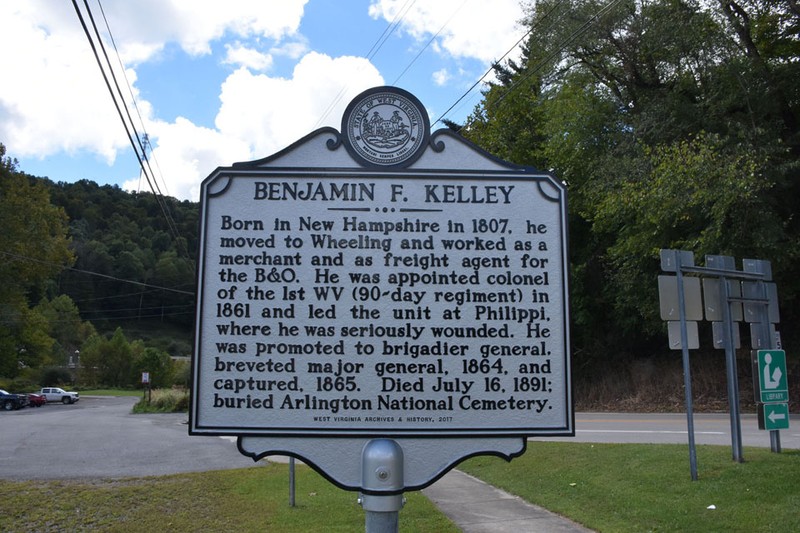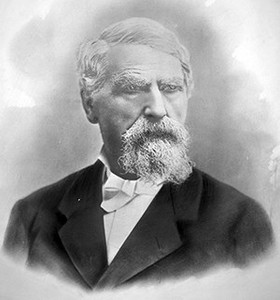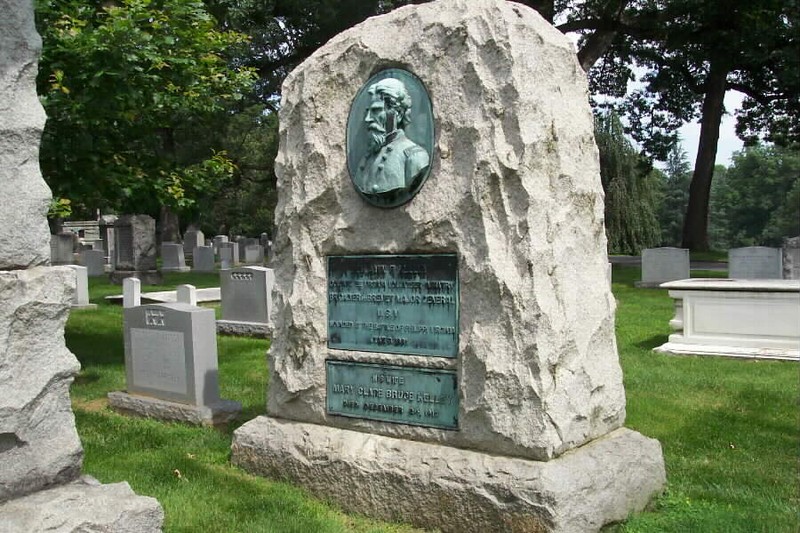Gen. Benjamin F. Kelley Historic Marker
Introduction
Text-to-speech Audio
Images
The marker for Gen. Kelley in Philippi, WV. Photo courtesy of the West Virginia Archives.

Gen. Kelley in uniform. Photo courtesy of the National Archives.

Gen. Kelley while serving as superintendent at Hot Springs park. Photo courtesy of the National Park Services archives.

Gen. Kelley's grave in Arlington National Cemetery.

Backstory and Context
Text-to-speech Audio
Born in New Hampshire in 1807, General Benjamin Franklin Kelley moved to Wheeling, WV in 1836. While there he began working as a merchant. Eventually, in 1851, he began to work for the Baltimore and Ohio Railroad as a freight agent. When the Civil War began 10 years later, Kelley helped to form the 1st West Virginia Infantry and was named colonel of the unit. The group fought at Philippi in 1861. During the battle, Kelley was severely wounded.
After the battle at Philippi, Kelley was named brigadier general and was charged with protecting the B&O railway lines from attack. Kelley’s troops often protected the line and its depots from attacking Confederate parties, most often led by Gen. McNeill who operated out of Moorefield, WV. Kelley’s 5th Brigade attempted to hinder the advance of the Jones-Imboden raid of 1863. The Union troops destroyed bridges and other infrastructure to slow the Confederates as they made their way through central West Virginia. Later that year, after the battle of Gettysburg in 1863, Gen. Kelley and his troops helped to pursue Gen. Lee through Northern Virginia. During the war, Gen. Kelley bought 600 acres of land in Maryland known as Swan Meadows. The property was used to treat injured soldiers and rest overworked horses during the war.
That year Gen. Kelley also ordered the arrest of the wife and young son of Confederate Captain McNeill. In retaliation, McNeill’s men infiltrated Kelley’s headquarters, capturing Kelley and Gen. George Crock.
After the end of the war, Kelley worked for almost 10 years as an internal revenue collector. In 1877, he was appointed the first superintendent of Hot Springs Reservation in Arkansas. During his time at this position, Kelley had hundreds of campers in the park removed and relocated lower down the mountain; this second settlement was nicknamed “Kelleytown.” Gen. Kelley also built the first park headquarters and helped to design a plan for the first thermal water reservoirs. Kelley left the position in 1882 as his health was declining. In 1865, Gen. Kelley returned to Maryland and moved to Swan Meadows where he died in 1891. Gen. Kelley was buried in Arlington National Cemetery.
Sources
McKinney, Tim. Benjamin F. Kelley. West Virginia Encyclopedia. December 07, 2015. Accessed February 21, 2019. https://www.wvencyclopedia.org/articles/1177.
West Virginia Highway Markers Database. West Virginia Department of Arts, Culture, and History. Accessed February 21, 2019. http://www.wvculture.org/history/wvmemory/hmresults.aspx?County=Barbour&Title=&Words=&Op=AND.
General Benjamin F. Kelley House. Maryland Historical Trust. October 15, 1981. Accessed February 21, 2019. https://mht.maryland.gov/secure/medusa/PDF/Garrett/G-V-A-143.pdf.
